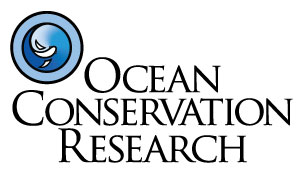This week in Budapest there is a gathering of ocean noise scientists, researchers, regulators, and educators all focused on marine bioacoustics. This is the third Effects of Noise on Aquatic Life conference convened by fish hearing specialist (and bioacoustic generalist)…
Shark Week! Tagging – a tale of Sharks, Fish, and Seals
Everybody is interested in Great White sharks, and scientists are no exception. One advantage of being credentialed is the opportunity to look a lot deeper into the subject using tools and equipment not readily available to the public. Satellite tagging…
Shark Week – Sharks have ears too! (2)
In response to our most recent newsletter on shark hearing, bioacoustics elder and fish hearing expert Art Popper contacted us to provide a more accurate pedigree on the understanding of shark hearing. While there was observed evidence of shark hearing…
Shark Week – Sharks have ears too!
It was once thought that sharks were just feeding machines led about by their sense of smell – and that they could smell blood in the water over a mile away. Some of this mythology was promulgated by military training…
Mark your calendars! Sept. 24 Ocean reception and presentation
On September 24 the San Francisco Bay Model will be buzzing with activity. Ocean Plastics artists Judith Selby and Richard Lang will be co-hosting a reception for their beautiful and sobering Beach Plastic artworks show Finding Meaning in the Mess…
Timeline: The Roots of Understanding Sound
Explore the history of sound and theory on our timeline: At OCR we talk a lot about sound and it’s importance to ocean life. Using sound to explore the depths of the ocean is akin to using light to…
Ocean Noise featured on Public Radio
Long-time colleague and NRDC ocean noise pollution attorney Michael Jasny was featured this weekend on National Public Radio in a brief piece that clearly highlights some of the problems with the increasing noise in the ocean. It is really worth…
Mid Frequency Sonar bothers blue whales as well!
The ocean noise pollution issue first came up on the general public’s sonar back in 2000 when the Navy was proposing a long distance submarine communications program called “Surveillance Towed Array Sensor System – Low Frequency Active” or “SURTASS-LFA” (in…
How do coral reef critters find home?
The life cycles for many coral reef animals are a bit tricky. Coral reefs are huge feeding bodies with billions of mouths looking for food. Much of that food is provided by the inhabitants of the reef itself – and…
